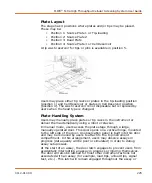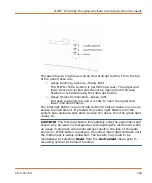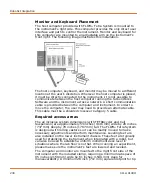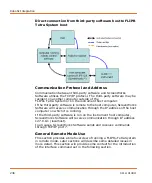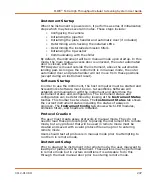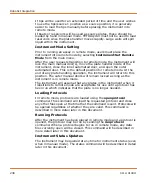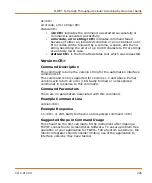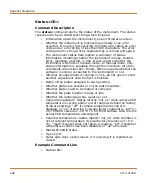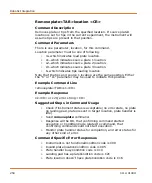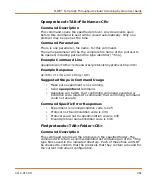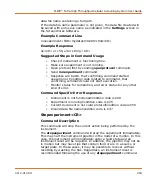
Robotic Integration
238
0112-0109 H
If tips will be used for an extended period of time and the user wishes
to use the tips/source 1 position as a source position, it is generally
easier to load the tips manually before placing the instrument into
remote mode.
If boats or reservoirs will be used as source plates, these should be
loaded by hand in manual mode. TETRAcycler must not be used to load
reservoirs since the plate handler moves rapidly. Large wells will spill
liquid within the instrument.
Instrument Mode Setting
Prior to running an assay in remote mode, users must place the
instrument into remote mode by selecting
Instrument
/
Set Remote
Mode
from the main menu.
After the user requests transition to remote mode, the instrument will
lock the main manual door(s), move the plate handler inside of the
instrument, close the inner automated door, and open the outer
automated door. This is the default position for remote mode. At the
end of any plate handling operation, the instrument will return to this
position. The outer manual doors will remain locked as long as the
instrument is in remote mode.
The instrument will assume that any plates in the instrument when it
transitions to remote mode are acceptable for use until a protocol has
been run which indicates that the plate is no longer needed.
Loading Protocols
In remote mode, protocols are loaded using the
openprotocol
command. This command will load the requested protocol and close
any other files open at the time that the command is sent. Protocols will
be opened regardless of whether they are valid. This command is
described in more detail later in this document.
Running Protocols
After the instrument has been placed in remote mode and a protocol is
opened, the protocol may be run by sending the
runprotocol
command. When a protocol begins to run in remote mode, any data
files currently open will be closed. This command will be described in
more detail later in this document.
Instrument Status Updates
The instrument may be queried at any time for instrument status (even
when in manual mode). The status command will be described in detail
later in this document.
Summary of Contents for FLIPR Tetra
Page 1: ...FLIPR Tetra High Throughput Cellular Screening System User Guide 0112 0109 H December 2011...
Page 12: ...Contents 12 0112 0109 H...
Page 16: ...System Overview 16 0112 0109 H...
Page 40: ...System Hardware Features 40 0112 0109 H...
Page 148: ...Exchanging Hardware 148 0112 0109 H...
Page 156: ...Calibration and Signal Test 156 0112 0109 H...
Page 196: ...Running an Experiment 196 0112 0109 H...
Page 232: ...Robotic Integration 232 0112 0109 H The following drawings illustrate these requirements...
Page 282: ...Data Processing Algorithms 282 0112 0109 H...
Page 294: ...Consumables and Accessories 294 0112 0109 H...
Page 298: ...Using AquaMax Sterilant 298 0112 0109 H...
Page 302: ...Electromagnetic Compatibility EMC 302 0112 0109 H...


